


William Bliss Sanders (9 February 1841 - 28 March 1896) was an architect based in Nottingham. [1]



William Bliss Sanders (9 February 1841 - 28 March 1896) was an architect based in Nottingham. [1]
He was born on 9 February 1841, the son of William Wilkins Sanders and Martha Bliss. He established himself as an architect in the early 1870s with offices on Wheeler Gate in Nottingham. On 17 September 1874, he married Florence Bellinger Skottowe Morris, daughter of Beverley Robinson Morris of York at St Matthew's Church, Talbot Street, Nottingham.
In 1879 he was appointed architect to The Imperial Hydropathic Institution Limited, which had taken over the Binns’ Hotel, Harrogate to improve and develop the Hydropathic facilities available. [2]
In 1883 he published a book with the title Half-timbered houses and carved oak furniture of the 16th and 17th centuries. It has an introduction by John Ruskin.
In 1884 he was appointed a surveyor to the Diocese of Southwell. [3]
He died at 2 Cathcart Road, London on 28 March 1896 and was buried in Burnham Cemetery on 1 April 1896 leaving an estate valued at £1,534 11s 6d.

Newark-on-Trent or Newark is a market town and civil parish in the Newark and Sherwood district of the county of Nottinghamshire, England. It stands on the River Trent, the A1 – on the route of the ancient Great North Road, and the East Coast Main Line railway. The origins of the town are possibly Roman, as it lies on an important Roman road, the Fosse Way. The town grew around Newark Castle, now ruined, and a large market place, now lined with historic buildings. It was a centre for the wool and cloth trades. In the English Civil War, it was besieged by Parliamentary forces and relieved by Royalist forces under Prince Rupert. Today Newark has many commuters to the city of Nottingham some 20 miles away, to London, and to other cities such as Leicester, Leeds, Doncaster and York.
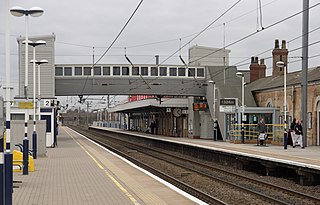
Newark North Gate railway station is on the East Coast Main Line in the United Kingdom, serving the town of Newark-on-Trent, Nottinghamshire. It is 120 miles 8 chains (193.3 km) down the line from London King's Cross and is situated on the main line between Grantham to the south and Retford to the north. The station is Grade II listed.

Watson Fothergill was an English architect who designed over 100 unique buildings in Nottingham in the East Midlands of England, his influences were mainly from the Gothic Revival and Old English vernacular architecture styles.

Thomas Chambers Hine was an architect based in Nottingham.
Richard Charles Sutton was an architect based in Nottingham. He was born 1834 and died on 18 October 1915.

William Bradford (1845-1919) was a prolific architect of breweries. Born in 1845 in Devon, son of Robert Bradford 1818-1875. Responsible for building or altering 70 breweries his first commission was a small addition to the "Hope Brewery" in East Grinstead (1879). Died at home in Surbiton on 2 February 1919.

Henry Goddard was an English architect who was a member of a family of architects who worked in Leicester. He moved to Lincoln and was later in partnership with his son Francis Henry Goddard.

Captain Gilbert Smith Doughty CE was an architect based in Nottingham and Matlock.
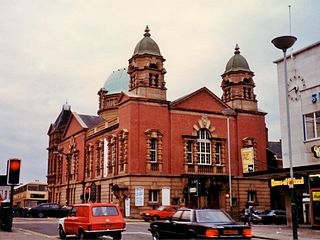
Arthur George Marshall ARIBA was an architect based in Nottingham from 1881.

William Arthur Heazell FRIBA was an architect based in Nottingham.

Albert Nelson Bromley was an English architect based in Nottingham.

Robert Clarke was an architect based in Nottingham.

John Collyer was an architect based in Nottingham.

Francis Williamson was a British surveyor and architect based in Nottingham.
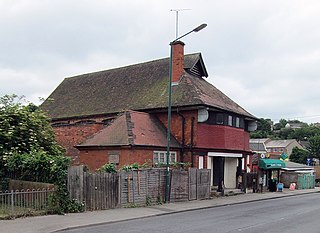
William Richard Gleave ARIBA was a surveyor and architect based in Nottingham.
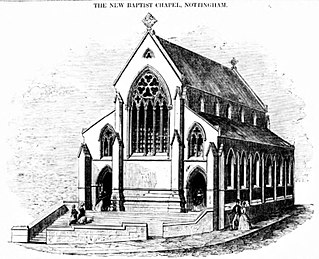
William Booker was an English architect based in Nottingham.

John Frederick Dodd LRIBA was an architect based in Long Eaton, Derbyshire.

John Bowley LRIBA was an architect and engineer based in England who worked mainly in Beeston, Nottinghamshire and Hastings.
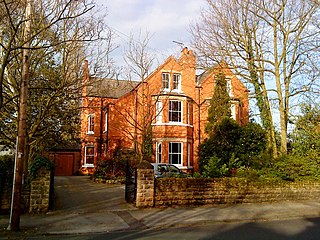
Thomas Woolston was an architect and builder.

Lieut-Colonel Herbert Walker FRIBA, M Inst CE, FSI, was an architect, surveyor and civil engineer based in Nottingham from 1870 to 1923.
| Wikimedia Commons has media related to William Bliss Sanders . |